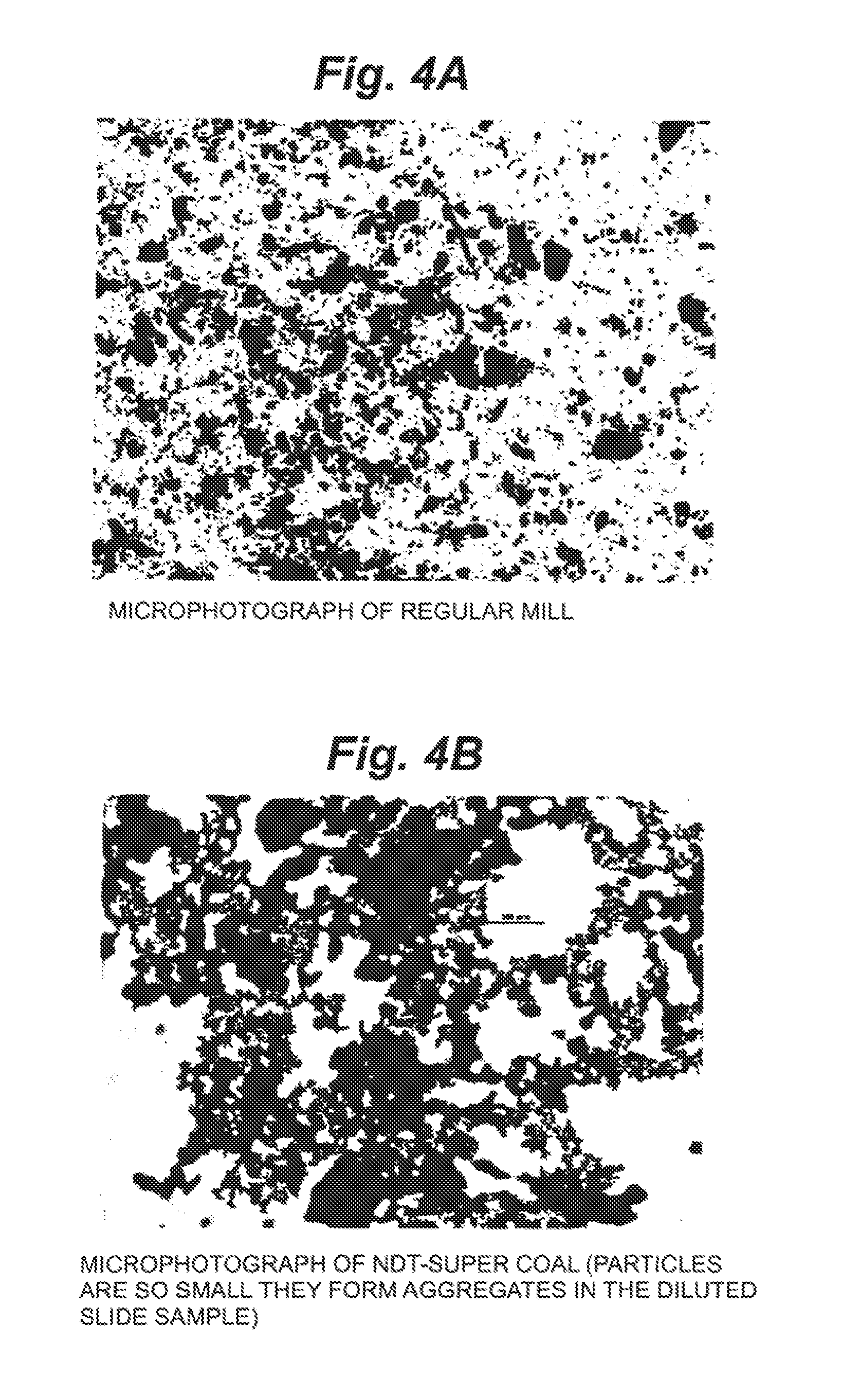Nano-dispersions of carbonaceous material in water as the basis of fuel related technologies and methods of making same
a carbonaceous material and water technology, applied in the direction of liquid carbonaceous fuels, fuels, combustion gas production, etc., can solve the problems of increasing the carbon content of boiler ash, nox levels generated by such burners reaching levels now unacceptable, and reducing the heat derating effect of the burner
- Summary
- Abstract
- Description
- Claims
- Application Information
AI Technical Summary
Benefits of technology
Problems solved by technology
Method used
Image
Examples
example
[0065]Combustion characterization studies were performed comparing colloidal coal-in-water slurries according to embodiments of the current invention to a slurry made with a conventional coal grind. The slurries were used in pilot-scale reburning tests to highlight any performance advantages to using a micronized coal water slurry product in terms of NOx reduction and carbon burnout as a reburn fuel compared with conventional coal water slurry. Nine reburn tests were conducted. Test variables included reburn zone residence time, reburn heat input, and initial NOx concentrations. The complete study is set forth in “NDT Combustion Characterization Studies,” Oct. 27, 2008, which is incorporated herein by reference in its entirety. In the study, the nano-dispersion of coal in water was referred to as “micronized.”
[0066]1. Equipment, Slurry Preparation, and Test Parameters
[0067]The reburning tests were conducted in a boiler simulation furnace (BSF) test unit that is designed to simulate ...
PUM
| Property | Measurement | Unit |
|---|---|---|
| particle size | aaaaa | aaaaa |
| particle size | aaaaa | aaaaa |
| particle size | aaaaa | aaaaa |
Abstract
Description
Claims
Application Information
 Login to View More
Login to View More - R&D
- Intellectual Property
- Life Sciences
- Materials
- Tech Scout
- Unparalleled Data Quality
- Higher Quality Content
- 60% Fewer Hallucinations
Browse by: Latest US Patents, China's latest patents, Technical Efficacy Thesaurus, Application Domain, Technology Topic, Popular Technical Reports.
© 2025 PatSnap. All rights reserved.Legal|Privacy policy|Modern Slavery Act Transparency Statement|Sitemap|About US| Contact US: help@patsnap.com



